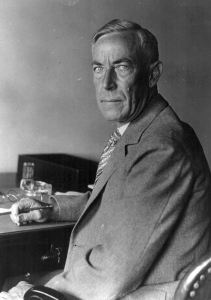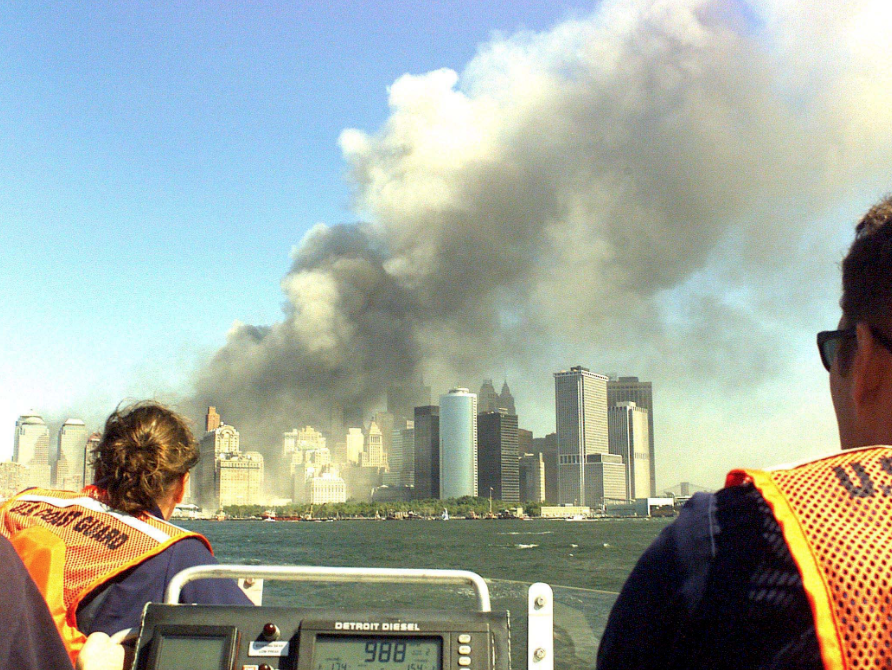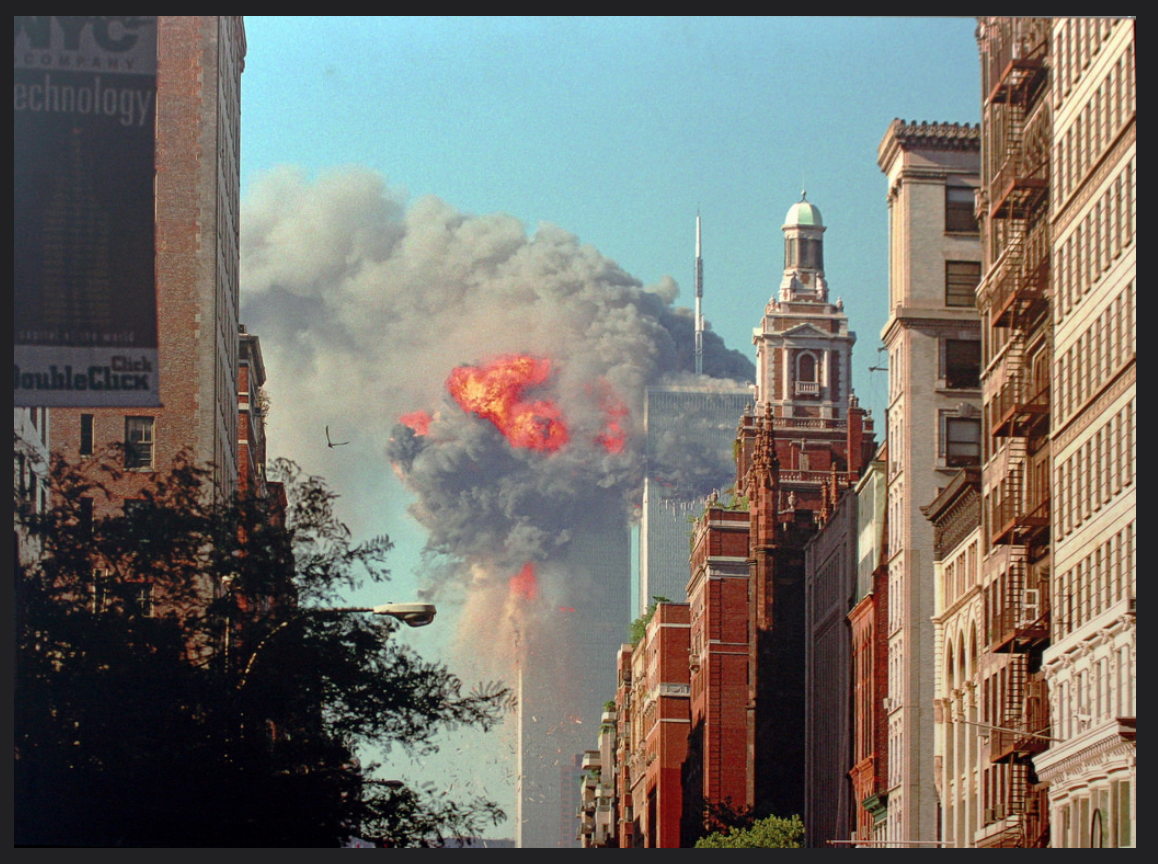4.3. Policing Eras
Tiffany Morey and Kate McLean
Policing researchers George Kelling and Mark Moore (1991) have identified three eras of policing in the United States. These eras are discussed below, and are often referred to as the Political Era, the Reform Era, and the Community Era. Each era is defined by differences in seven areas, namely (1) Authorization; (2) Function; (3) Organization; (4) Demand; (5) Environment; (6) Tactics; (7) Outcomes. [1]
Political Era: The political era is often referred to as the first era of policing in the United States and it began around the 1840s with the creation of the first bona fide police agencies in America [2]
This era of policing is marked by the industrial revolution, an influx of immigrants, the formation of large cities, and the abolition of slavery. The first municipal police departments in the U.S. were formed during this period, including that of New York City (1845) and Chicago (1855).
With the advent of the industrial revolution came a surge in new job opportunities, attracting many individuals – including new immigrants – to growing cities. These intertwined phenomena generated new conflicts, and a rise in crime, in places that were newly-teeming with diverse individuals. The abolition of slavery was also accompanied by the rise of new laws intended to target and criminalize the Black population – as well as vigilante terrorist organizations such as the Ku Klux Klan. Often growing out of Southern Slave Patrols (the previous form of “law enforcement” in the South), the Klan began to make terrifying appearances throughout the new country, often operating virtually unencumbered.

As its name suggests, the first era of law enforcement was dominated by political calculations, namely the interests of mayors and party machines within growing U.S. cities. Not unlike today, policing during this era was largely under the control of local politicians, who expected municipal police officers to serve their personal agendas, for example, by breaking up protests (NOTE: The word policeman/men is utilized in this era/context, because during this time period, women were not allowed in the profession. If they were accepted, they were permitted only to work with juveniles or women in a “mothering” role). Policing was a well-paid profession with little (or no) required training, and low professional standards; to become an officer of the New York City Police Department, a standard bribe of $500 was accepted. Black policemen were rarely hired in the political era, only making their way into uniform in the late 1800s. When the Civil Rights Act of 1875 was ruled unconstitutional, Black officers all but disappeared from policing until the 1950s.
Reform Era: As the Political Era of policing ended up being laced with corruption and brutality, it was followed by the Reform Era. One police chief was largely at the forefront of this new era, Chief August Vollmer. He is considered the pioneer for police professionalism. August Vollmer was the Chief of Police in Berkeley, California (1905-1932). He had many beliefs about policing that would forever change the world of local law enforcement:
- Candidates who were testing to be in policing had to undergo psychological and intelligence tests
- Detectives would utilize scientific methods in their investigations, through forensic laboratories
- Recruits, for the first time, would attend a training academy (police did not receive any formal training prior to August Vollmer’s arrival)
- Criminal justice should be formalized as an academic discipline and science (Vollmer helped found the first School of Criminology at the University of California at Berkeley)
Chief August Vollmer saw police officers as “social workers with a badge,” who needed to delve into the causes behind crimes in order to solve the root issue – not just arrest it. [3] He believed that, in order to rehabilitate offenders, police officers needed to look behind the handcuffs and start looking into the person, and reasons behind the behavior. [4]

Vollmer supported the diversification of police departments during this era, but efforts in this area admittedly fell short.
The Community Era- 1980s to 2000: In the 1960s and 1970s, the crime rate doubled – not to mention, it was a time of tremendous civil and political unrest. Civil rights movements spread across the U.S., and the police were on the front lines. Media coverage showed white officers brutalizing African Americans, left-wing student groups, and anti-war protesters, inflaming police-citizen tensions. The U.S. Supreme Court handed down the landmark Miranda v. Arizona and Mapp v. Ohio decisions restricting police power. Overall, the “writing was on the wall” – policing had to change. The Community Era of policing began with the intention of involving community members, and addressing their interests, within policing strategies and decisions. Ultimately, this era aspired toward not only improved relations, but more effective policing through collaboration with community members themselves.
This new era of community policing held that police couldn’t act alone; the community must pitch in as well. Whether the problems were a dispute between neighbors, or high crime areas dealing with drug markets and violence, these issues did not develop overnight, and could not be solved by the police alone. Instead, these community problems needed a multi-pronged approach, where the police worked together with the community to solicit their “expertise” as long-term residents so, over time, the issues could be systematically solved. Out-of-the-box thinking was common in this era of community policing, as community stakeholders urged police to consider new, or reconsider old, strategies. For example, the role of police patrol in reducing crime, and increasing citizens’ trust, was explored through two landmark studies (with mixed results). During this time, police candidates started showing up to the application process with Associate’s and Bachelor’s degrees. The ‘old school officers’ sometimes mocked these well-educated candidates, but the landscape was changing and officers needed more thorough training to answer the call.
Problem-oriented policing was an offshoot of community policing, in that it drew on the interests and knowledge of community members, but focused on the problems first. The biggest difference was that problem-oriented policing used a defined process for working towards the solution. The problem was torn apart layer by layer and rectified according to set parameters that had a proven record of working.
The Community Era was also a time for research. Prior to this era, research on crime, police, or criminal justice topics were few and far between. With new federal government funding options available, this era’s missions could be supported through grants and the needed research began. Proof of what worked, what didn’t, and suggestions on how to improve policing were abundant. Without research or studies, policing can become stagnant. The Kansas City, and Newark, Patrol Experiments were examples of such major research undertakings.
The Community Era also gave rise to the more controversial “Broken Windows Theory” and “Broken Windows” or “Zero-Tolerance” policing. Original theorists James Q. Wilson and George Kelling (same as above) postulated that diverse signs of community disorder – such as littler, panhandling, or literal “broken windows” – could encourage first minor, and then major, crimes, if left unaddressed. This was because these small signs of disorder signaled that “no one cared,” and perhaps, that no one would do anything if larger infractions were committed. Resting on this supposition, Broken Windows policing advocated for “cracking down” on minor criminal infractions, in order to discourage more serious criminals from taking their chances. The legacy of Broken Windows policing is mixed, with commentators crediting this style of law enforcement with the “crime miracle” of the 1990s, and others focusing on the patterns of police abuses that followed.
Community Era Example
“I remember the Community Era very well. I was a new police officer during this time and actually at the forefront of Community Policing and Problem-Oriented Policing. I was the first woman officer at my police department that was pregnant and the administration was open to suggestions when asked what to do with me when my belly expanded. I politely suggested that once I was five to six months pregnant and began to show (and not fit in my uniform or patrol belt anymore), I will be voluntarily transferred to the Crime Prevention Division. With my doctor approving this decision, my belly grew, and I transferred to this new division. I remember hitting the streets and knocking on doors, spewing how great of a panacea Community Policing was. It took some buy-in and with the citizens who ‘bought-it,’ the concept actually became a reality and worked! Months later we had a string of burglaries occurring in a high-crime neighborhood. The detectives, patrol, everyone hit the streets, knocking on doors, questioning everyone, in an attempt to find the criminals responsible. With no avail, I turned to Community Policing. I brought in a mounted police officer and horse. My colleagues chucked and shook their heads in response! What was I thinking?!?! “It was a waste of resources,” they balked! How could a cop on a horse solve this crime? I was glad; I ‘wasted my time,’ because it worked! The officer on the horse brought citizens out of their houses that normally would never have spoken to a police officer normally. The horse was such a spectacle in the neighborhood, that it was the catalyst that caused citizens to not only come out of their houses but to start talking about what and who they had been seeing in and around their neighborhood that did not belong. One such sighting was a vehicle description, which led to criminals responsible for the burglaries. ”
A Fourth Era? The Homeland Security Era, 2001 to Present
On September 11th, 2001, when terrorists hijacked 4 airplanes and flew them into the World Trade Center buildings and Pentagon, a fourth era of policing, the era of Homeland Security, was said to emerge. [5] The long-lasting repercussions of this terrorist act would forever change life for Americans, and the daily activities of all policing departments. There is some debate in the field as to the order of policing eras and what they should be called. Some scholars list the policing eras as:
- Pre-Policing Era
- Political Era
- Reform Era
- Community Era
While others believe the policing eras are:
- Political Era
- Reform Era
- Community Era
- Homeland Security Era
The reality of the 9/11 tragedy was that it did start a new era of policing. In fact, a case could be made for a large dark line that became metaphorically visible on 9/11/01, when the Community Era shifted to the Homeland Security Era as airplanes destroyed America’s feelings of safety.

Policing under Homeland Security is marked by a more focused concentration on intelligence gathering through routine law enforcement activities, as well as increased interest in the centralization of policing. [6] Scholars have increasingly examined the pros and cons of a national police department in the United States (for example, following the example of Canada’s Royal Canadian Mounted Police.) With the advent of the Homeland Security Era, a new model of centralized organizational control began, due to the need for information dissemination. One of the biggest flaws of 9/11 was the lack of communication between law enforcement agencies. After 9/11, the Department of Homeland Security was developed and one of its first major missions became the dissemination of information and communication. So, while a national police department does not exist in the United States, there are ongoing efforts to better connect law enforcement all all levels through common reporting systems.

- Greene, J. R., & Mastrofsky, S. D. (Eds.) (1991). Kelling, G.L., & Moore, M. H. (1991). From political to reform to community: The evolving strategy of the police. In Community Policing: Rhetoric or Reality. New York: Paeger. ↵
- Oliver, W. M. (2006). The fourth era of policing: Homeland security. International Review of Law, Computers & Technology ↵
- Reppetto, T.A. (1978). The Blue Parade. New York: Free Press. ↵
- Reppetto, T.A. (1978). The Blue Parade. New York: Free Press. ↵
- Oliver, W. M. (2006). The fourth era of policing: Homeland security. International Review of Law, Computers & Technology. ↵
- Oliver, W. M. (2006). The fourth era of policing: Homeland security. International Review of Law, Computers & Technology. ↵

